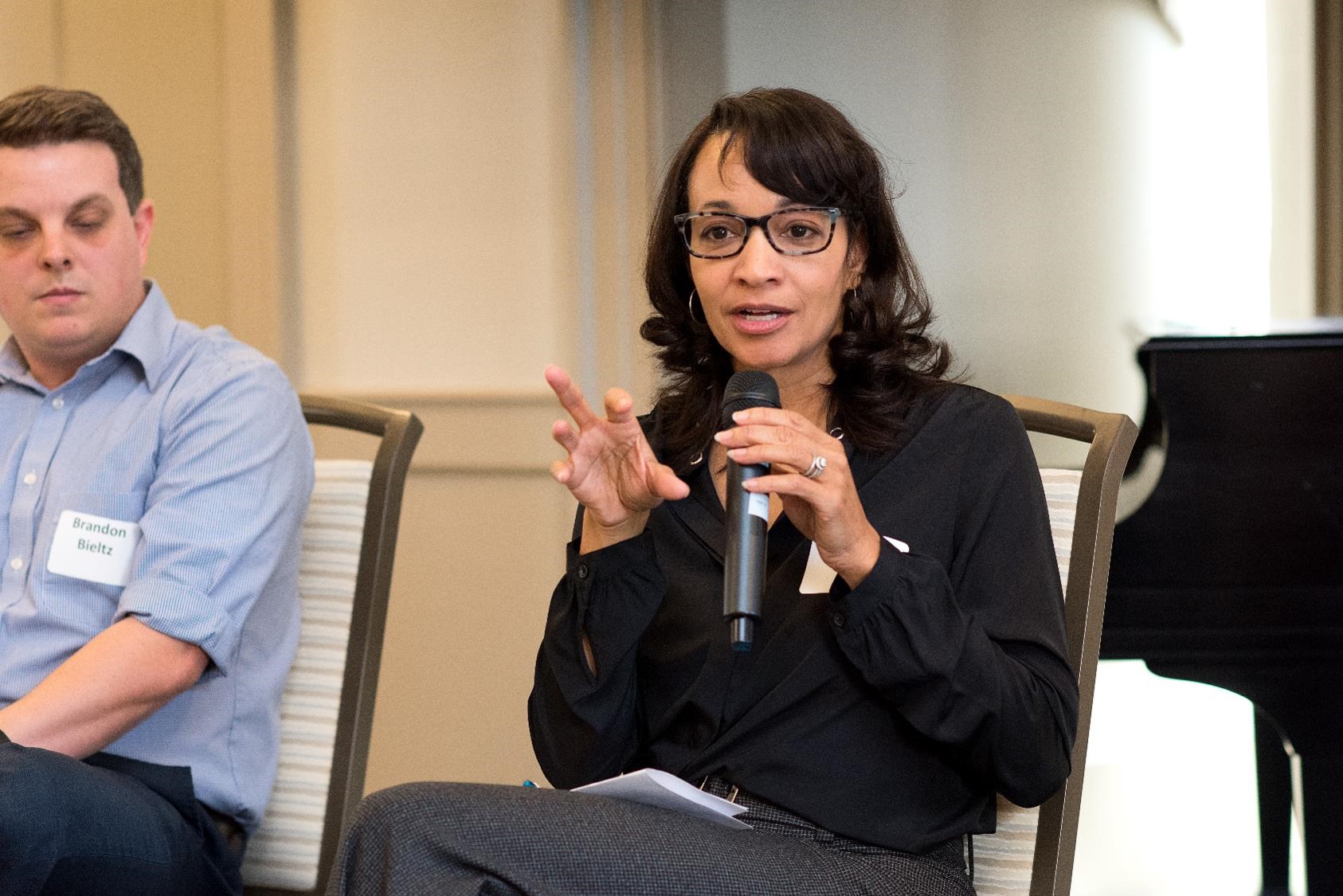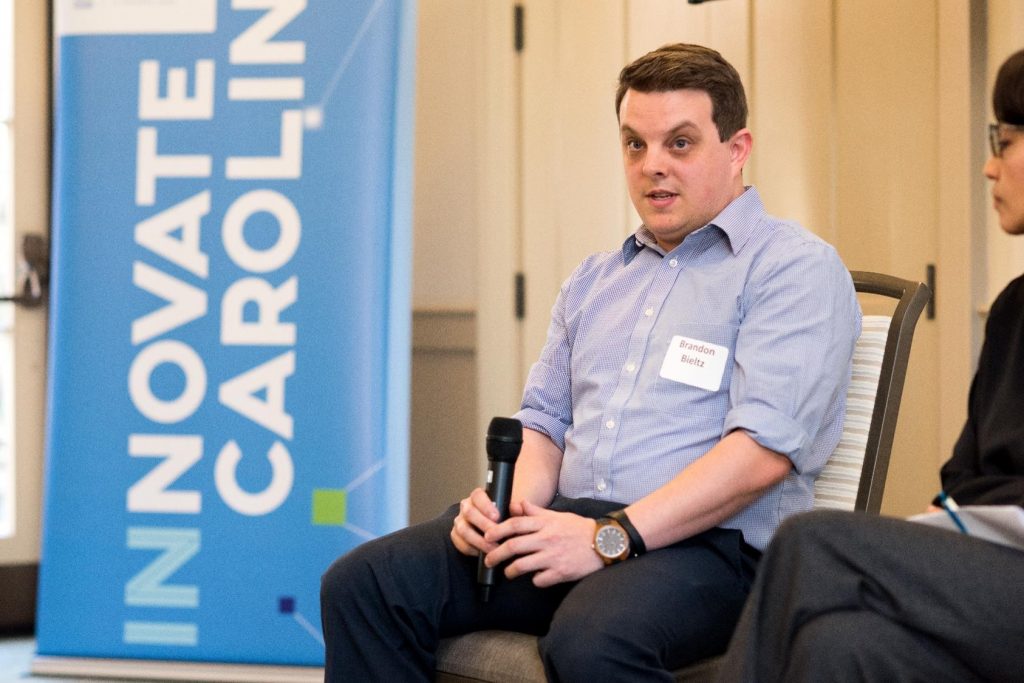


How can a story draw the audience in and rise above the noise? Is there a way to tell a complex story in a more relatable way? Those who attended the Innovate Carolina Network Forum on Jan. 16 engaged with a panel of local storytelling experts who shared how they draw audiences in and use data to pique interest and understanding.
Brandon Bieltz, director of web content at UNC-Chapel Hill, joined Colby Gottert and Dilsey Davis of video storytelling firm DDC International to share how their organizations deliver story-driven, data-infused content. Over the next few weeks, we’ll share key takeaways from their presentations that your organization can use to hone its storytelling strategy and tap into the powerful combination of hard facts and human emotion.
While data and hard facts are important story elements, Bieltz says that building the foundation of a great story starts with tapping into human emotions.
“Humans are not thinking machines. They are feeling machines that think,” he said, citing a communications mantra that he and others in the UNC Office of Communications recommend considering. This approach is rooted in human psychology, Bieltz noted. It turns out that the limbic system in the human brain that is responsible for emotion is also the part of the brain that’s most linked to trust. Great storytellers use this understanding of science to their advantage.

As a start, Bieltz recommends that communicators ask themselves the following question during the planning phase: Who is the best person to tell this story?
“A face or a person is the best way to build that emotional connection with the audience,” he said. “An ambiguous concept about a company or program can’t create a connection the way a person can.”
It’s all about leading with a personal experience to draw the audience in. Bieltz shared a case study of a story about the Carolina Covenant program, which helps students from low-income families graduate debt free, as an example.
A video story created by the UNC Communications team that tells the story of the Carolina Covenant Program through the eyes of student Will Heffner.
On the program’s 10th anniversary — a milestone — a story published about Carolina Covenant and its objectives was read 166 times.
Contrast those results with a different story on the program, which took a more human-centered approach. Rather than just talking about the program itself, the UNC Communications team created a video that told the story of the Covenant program through the eyes of an actual student who shared his personal journey. The results? The more emotion-driven video story, which was published at a time not connected with the program’s anniversary, was viewed 26,000 times.
“By bringing emotion to the story, you’re telling the person why they should care,” said Bieltz. “Caring means acting, donating, investing or just simply engaging long enough to get more information about what we’re doing at the University.”